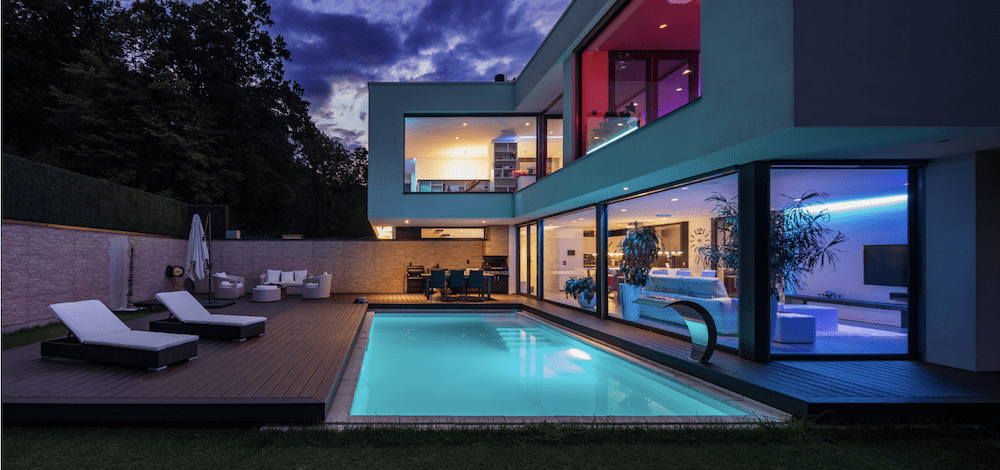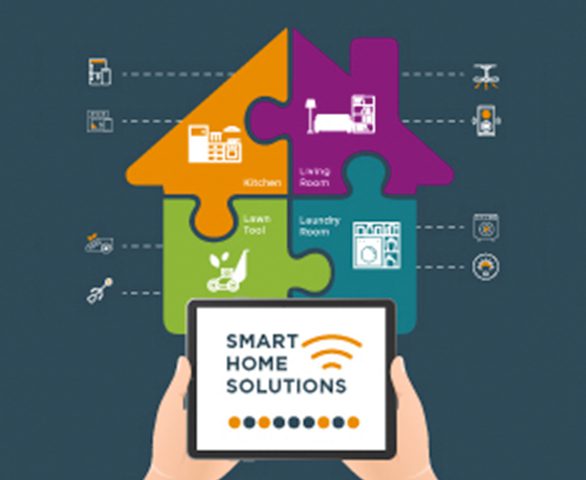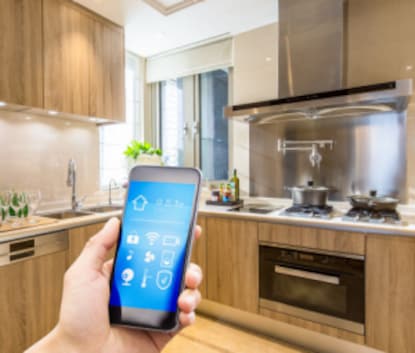Smart Homes: Connectivity Brings New Opportunities to Designers of Home Systems
In an era of smart technology, there really is no place like home.

Today’s consumer has come to expect both convenience and cost-savings from the new technologies that are reshaping the way people work and live. Fueled by the Internet of Things (IoT), nowhere is this more evident than in smart homes.
Powered by computing devices and information technology, smart homes allow for multiple appliances and devices to be automatically and remotely controlled using a mobile or other networked device. Smart homes answer consumer demands for ease, entertainment, comfort, and sustainability.
A growing global market
In 2021, global smart home market reached $62.7 billion; by 2030, it is projected to hit $537 billion. An array of trends is accelerating smart home growth.

Energy savings and sustainability: A desire for energy savings and a growing sense of environmental responsibility is driving smart home adoption. In major markets around the world, consumer concern about energy consumption is projected to become the most significant factor driving smart home adoption.

Security and surveillance: Around the world, home monitoring is of growing interest, particularly in addressing safety concerns over personal property and belongings. Applications include the adoption of video door monitoring, smart alarms, digital locks and lockers, and motion-sensing cameras that can be remotely controlled from a web-enabled device. Homeowners can be alerted to in-house motion and police and fire authorities can be immediately notified of imminent threats.
Pandemic-related lifestyle changes: COVID-19 has dramatically changed lifestyles around the world. These changes have had a direct impact on the growth of smart homes with a heightened emphasis on health and safety. In addition to automating many functions, the increasing use of home delivery has driven the demand for connectivity options that include voice controlled and smart-enabled access point solutions. This includes:
- Health and wellness solutions: As consumers spend more time at home and reduce their exposures to health clubs and gym memberships, they have turned to connected in-home exercise equipment and medical devices.

- Smart kitchens: The pandemic has also led to a surge in home cooking, directly impacting the growth of smart kitchens and advanced appliances. Appliances that combine features, allow for easier monitoring/repair, and add advanced personalization and digital elements are expected to become the new standard.
Technology and market trends
Underlying the smart home market are technological advancements, including:
- Enhanced technologies: Smart homes rely on the strength and bandwidth of wireless technologies to effectively operate. With the advent of 5G, the deployment of the Internet has been boosted to support an increasing number of internet users and allow for connectivity across a wider range of smart home devices
- Artificial intelligence: AI has enabled devices to offer more advanced capabilities. For example, through personalization features, the devices can learn about users’ behaviors, eliminating the need for direct input.
- Economic factors: Greater disposable income has positively impacted smart home growth as consumers are willing to spend on the heightened accessibility, availability, and convenience smart home applications offer. This is particularly true in the developing economies of the Asia Pacific, where smart home growth is the highest in the world.
- Government intervention amidst energy concerns: Energy efficiency and savings are important aspects of any nation’s economic development. These concerns have become even more critical in the face of global warming. As a result, regulatory bodies in North America, Europe, and the Asia Pacific, are incentivizing energy-saving and low carbon emission-oriented solutions. Smart homes, which heighten control of energy usage and emphasize the use of non-greenhouse gas emitting electrical appliances, are well-positioned to address these new climate-related mandates.
- Surge in smart buildings: With growing urbanization, a surge in smart buildings will bolster the market’s overall growth. While this is a global phenomenon, it is a particularly relevant to the North American market.
Key design opportunities and challenges
As manufacturers look to develop smart home products and take advantage of growth trends, a variety of technology and design issues must be considered.
- High installation and maintenance costs: Installing advanced technologies, including IoT, AI, machine language, block down, and others, into a fully equipped smart home is currently limited to the high ends of the consumer landscape.
- Compatibility issues: The smart home market is currently fragmented with many players developing various systems. While it is easy to integrate and link up devices from the same manufacturer or vendor, connecting systems from multiple players may encounter compatibility issues that limit functionality or reliability.

Sensors are at the heart of most connected home technologies.
A new generation of interconnects, sensors, antennas, relays, switches, and passive components can be incorporated into smart home applications. These solutions enable the development of thermostats that adapt to sleep patterns, lighting fixtures that reduce carbon emissions, security systems that respond to voice commands, and kitchen appliances that hasten meal preparation. TE Connectivity partners with nearly every major global appliance OEM to support the design and engineering of safer, more sustainable, and more connected home technologies.
To learn more about key application segments, regional dynamics, and the latest connected home technologies, read TE Connectivity’s smart home white paper in its entirety.
Take a virtual tour of a smart home, view the latest products designed for smart home applications, or see TE’s article about IoT technologies.
Like this article? Check out our other articles on Automation and Sensors, our Consumer Market Page, and our 2023 Article Archive.
Subscribe to our weekly e-newsletters, follow us on LinkedIn, Twitter, and Facebook, and check out our eBook archives for more applicable, expert-informed connectivity content.





